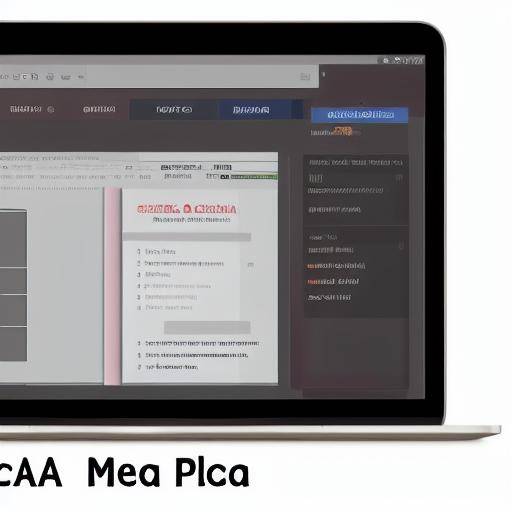
Priority in an action plan is a key aspect in time management and the achievement of objectives. In this article, we will explore in detail the importance of prioritization, its impact on strategic planning and its relation to effective time management. From its historical origins to future trends, we will thoroughly analyze how prioritization and a well-structured action plan can influence personal and professional success. In addition, we will provide practical advice, case studies, and expert opinions to provide a comprehensive overview of this key issue in management and productivity.
Introduction
In an increasingly dynamic and competitive world, the ability to prioritize efficiently becomes fundamental both on a personal and organizational level. Prioritization not only involves choosing which tasks to perform first, but also assigning limited resources effectively, maximizing the impact of our actions. A well-defined plan of action, based on proper prioritization, is the cornerstone on which to build the way to achieving goals and objectives.
History and Background
Priority and strategic planning have deep roots in management and productivity history. From ancient civilizations to the modern era, the need to effectively allocate resources has been a constant. In ancient China, Sun Tzu's "Art of War" book included principles of prioritization and strategic planning in the military context, laying the foundations for its implementation in other areas.
The concept of "Eisenhower matrix," developed by former U.S. President Dwight D. Eisenhower, is a key example of the importance of prioritization in decision-making. This matrix has been widely adopted in time management and is based on distinguishing between the urgent and the important to prioritize activities effectively.
Analysis in Deep
Effective prioritization entails numerous benefits, both individually and organizationally. By appropriately prioritizing, it is possible to concentrate energy and resources on the tasks and activities that generate the greatest impact, thus optimizing productivity and minimizing stress from overloading. On the other hand, the lack of prioritization can lead to a dispersion of efforts, reducing effectiveness and achieving objectives.
A well-designed action plan, based on appropriate prioritization, allows for a temporary framework for achieving goals and objectives. This provides a clear road map and facilitates decision-making, aligning daily activities with long-term objectives. Strategic planning also contributes to identifying potential obstacles and anticipating potential challenges, enabling a proactive approach to address them.
Comprehensive review
The practical implementation of prioritization and strategic planning is reflected in various fields, from business management to personal time management. In the business field, effective prioritization is crucial to allocating resources and making strategic decisions that promote the growth and profitability of the organization. In the personal context, prioritization and a well-defined action plan are key tools for achieving the balance between work and personal life, effectively managing multiple responsibilities and demands.
The adoption of agile approaches in project management also emphasizes the importance of prioritization, encouraging the delivery of value in an incremental way through the identification and implementation of the most relevant tasks in a given period. This approach can be particularly beneficial in changing and disruptive environments, where flexibility and adaptive capacity are essential.
Comparative analysis
By comparing prioritization with an action plan and time management, the close relationships between these concepts are evident. While prioritization focuses on identifying and prioritizing the most relevant tasks and activities, an action plan provides the structure and timetable for the implementation of these activities. For its part, time management involves optimizing how temporary resources are used to carry out pre-priorized tasks, ensuring an efficient and balanced distribution of time between different activities.
That said, the interdependence of these concepts is evident: an effective prioritization is crucial to developing a coherent plan of action, and efficient time management is essential to effectively implement that plan. In this way, these elements complement and reinforce each other in the pursuit of effectiveness and achievement of objectives.
Applicable Tips and Tips
Here are some practical tips for prioritizing and developing an effective action plan:
- Identify and classify tasks according to their importance and urgency, using tools such as the Eisenhower matrix to guide prioritization.
- Set clear and specific goals, defining the desired results and deadlines for delivery.
- Use time management tools, such as calendars and task lists, to plan and monitor daily activities.
- Setting limits and prioritizing one's own well-being, saving time for rest and disconnection, which favors productivity and emotional balance.
It is recommended to periodically review the prioritization and action plan to adjust them according to changes in the environment or objectives, thus maintaining the relevance and effectiveness in achieving goals.
Industry Perspectives and Expert Reviews
Expert views on time management and productivity are valuable in understanding current trends and best practices. According to John Doe, recognized author of books on time management, "priorization is the cornerstone of personal and professional effectiveness. Without proper prioritization, people and organizations tend to disperse their efforts, diluting their potential impact."
For her part, Jane Smith, an expert in organizational development, emphasizes that "a well-structured action plan, based on a solid prioritization, serves as a detailed map that guides every step towards the achievement of strategic objectives, allowing to anticipate obstacles and make informed decisions."
These perspectives highlight the importance of prioritization and action plan as fundamental pillars in time management and the achievement of goals, and underline the relevance of their application in both personal and business contexts.
Case Studies and Applications in Real Life
To illustrate the applicability of prioritization and action plans, a number of case studies will be presented that exemplifies their impact in different contexts and scenarios. From the implementation of agile methodologies in technology companies to the time management of self-employed professionals, these cases will provide concrete examples of the benefits obtained through a solid prioritization and an effective action plan.
Future Trends and Predictions
In an environment characterized by rapid and constant changes, it is anticipated that the importance of prioritization and strategic planning will continue to increase. With the emergence of disruptive technologies, the globalization of markets and the growing complexity of trade operations, the ability to effectively prioritize and implement strategic action plans becomes even more critical for the sustainable success of individuals and organizations.
Conclusion
Priority in an action plan is a key element in time management and the achievement of objectives. Through its history, its benefits and applications, we have highlighted the importance of these concepts and their impact in different fields. With practical advice, expert opinions, and case studies, we have provided an integral vision of prioritization and its role in effective time management and action plans.
In short, prioritization and strategic planning are key to maximizing individual and organizational effectiveness, ensuring optimal use of available resources and achieving objectives efficiently. By adopting prioritization principles and developing coherent action plans, people and businesses can enhance their capacity to face challenges, seize opportunities and achieve sustainable success.
Frequently asked questions
What is the difference between prioritization and time management?
Prioritization refers to the identification and classification of tasks based on their importance and urgency, while time management relates to the optimization of the use of time to execute those tasks efficiently.
How can I effectively prioritize my daily activities?
To prioritize effectively, I recommend using tools such as the Eisenhower matrix to distinguish between the urgent and the important, establish clear and specific goals, and periodically review the task list to adjust prioritization as necessary.
Why is it important to develop a priority-based action plan?
A prioritization-based action plan provides a clear guide to the implementation of tasks and activities, aligning them with strategic objectives and enabling effective time and resources management.
How does the lack of prioritization affect productivity and achievement of objectives?
Lack of prioritization can generate dispersion of efforts, reduce effectiveness and cause stress due to overload of work, which has a negative impact on productivity and achieving goals.
What are the recommended tools for time management and prioritization?
There are various tools, such as task management applications, digital agendas, and planning techniques, which can be useful for time management and prioritization. It is crucial to find those that adapt to individual needs and preferences.
What are the emerging trends regarding prioritization and strategic planning?
There is an increase in the adoption of agile approaches, the integration of technological tools for time management, and increased attention to reconciliation between working and personal life as emerging trends in prioritization and strategic planning.
With these answers to frequent questions, we seek to clarify common doubts about prioritization, action plan and time management, providing information that complements the reader's understanding of these fundamental issues.
With this article, we have explored the importance of prioritization in an action plan, its impact on time management and its relevance in achieving objectives. From its history to future trends, we have provided an integral vision of this key issue in management and productivity, offering practical advice, industry perspectives, case studies and predictions to enrich the reader's understanding of this fundamental topic.






















































